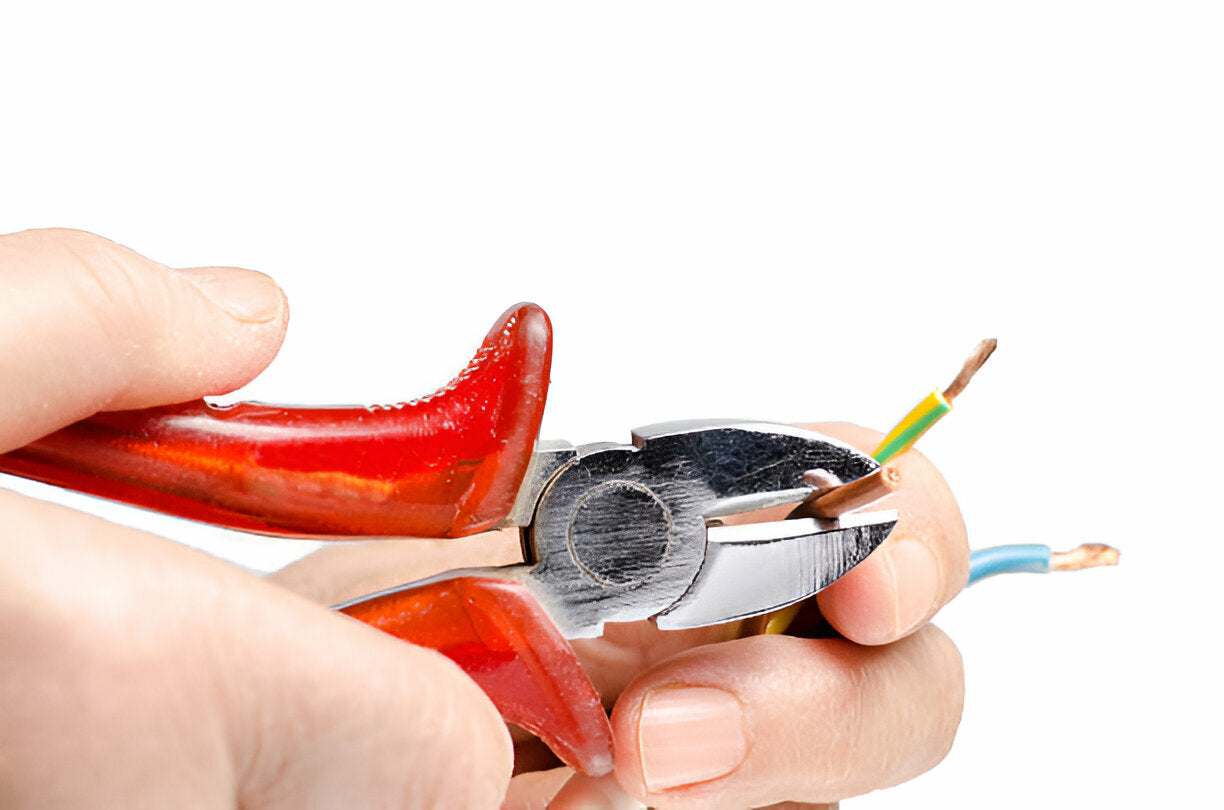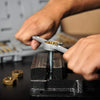
Safety Tips for Using Wire Stripping Tools
Wire stripping tools are essential for professionals and DIY enthusiasts alike when it comes to working with electrical wires. These versatile tools allow for precise wire stripping, ensuring clean and reliable connections. However, it's crucial to prioritize safety, even when using the best wire stripping tools, to prevent accidents and injuries.
In this article, we will provide you with comprehensive safety tips to follow when using wire stripping tools. By following these guidelines, you can protect yourself and others while achieving efficient and accurate wire stripping results.
Related Article: The Essential Guide to Wire Stripping Tools
Importance of Safety Measures
Safety measures are of utmost importance when it comes to using wire stripping tools. These tools often feature sharp blades or cutting edges and are utilized in close proximity to electrical currents. Neglecting safety precautions can have severe consequences, including cuts, lacerations, or even electric shocks. It is crucial to prioritize safety and follow proper guidelines to minimize the risks associated with wire stripping.
By adhering to the safety guidelines outlined in this article, you can create a safe working environment and protect yourself and others from potential harm. The sharp blades present in wire stripping tools can cause serious injuries if not handled with care. Cuts and lacerations can occur if the tool slips or if improper techniques are used. Additionally, the electrical currents involved in wire stripping pose a risk of electric shocks if safety measures are disregarded.
To ensure a safe working environment, it is essential to familiarize yourself with and implement the safety guidelines discussed in this article. By doing so, you can mitigate the risks associated with wire stripping and carry out your work confidently and securely. Remember, safety should always be the top priority when using wire stripping tools, and by taking the necessary precautions, you can significantly reduce the likelihood of accidents and injuries.
Protecting Yourself and Others
When using wire stripping tools, it's essential to prioritize personal safety and consider the safety of those around you. Here are some key points to keep in mind:
- Always wear appropriate personal protective equipment (PPE), including safety glasses, gloves, and protective clothing.
- Ensure that the work area is well-lit and free from clutter or potential hazards.
- Keep bystanders, especially children, away from the work area to prevent accidents.
Choosing the Right Wire Stripping Tool
Selecting the right wire stripping tool for the task at hand is crucial for both safety and efficiency. Consider the following factors when choosing a wire stripping tool:
- Ensure that the tool is appropriate for the wire gauge you are working with. Using a tool designed for a different gauge can lead to improper stripping or damage to the wire.
- Choose a tool with insulated handles to reduce the risk of electrical shocks.
- Opt for wire stripping tools with ergonomic designs to minimize hand fatigue during prolonged use.
Inspecting the Wire Stripping Tool
Before using a wire stripping tool, it's essential to inspect it for any signs of damage or wear. Here's what to look for:
- Check the cutting edges or blades for sharpness and ensure they are free from nicks or chips.
- Inspect the handles for any cracks or signs of wear that could affect your grip or comfort.
Proper Handling and Technique
To ensure safe and efficient wire stripping, it's crucial to follow proper handling techniques. Let's explore the key aspects of handling wire stripping tools correctly.
Securely Holding the Wire
When using a wire stripping tool, it's important to securely hold the wire to prevent slippage or accidental cuts. Follow these steps:
- Hold the wire firmly with one hand, ensuring a stable grip.
- Position the wire within the stripping jaws of the tool, aligning it properly for the desired stripping length.
Applying the Right Amount of Pressure
Applying the correct amount of pressure when using a wire stripping tool is essential for clean and precise cuts. Here's how to do it:
- Use a controlled and steady hand to ensure consistent pressure on the tool's handles throughout the stripping process.
- Avoid excessive force, as it can lead to accidents or damage to the wire.
Stripping the Wire
Proper wire stripping technique is crucial for achieving clean cuts and maintaining the integrity of the wire. Follow these steps:
- Position the wire within the stripping jaws, ensuring that the insulation is properly aligned.
- Gently squeeze the handles of the wire stripping tool to engage the cutting blades.
- Apply a smooth and even motion to strip off the insulation, keeping the tool perpendicular to the wire.
- Release the handles once the insulation is removed, ensuring that the cutting blades are clear of the wire.
Related Article: From Wire to Wood: How to Use Snips for Clean Cuts
Handling Different Wire Types
Wire stripping tools are designed to handle various wire types, including solid and stranded wires. Here are some considerations when working with different wire types:
- For solid wires, ensure that the cutting blades of the wire stripping tool are adjusted to the appropriate gauge size to prevent damage to the core.
- When working with stranded wires, be cautious not to accidentally cut or damage any of the individual strands during the stripping process.
Related Article: A Guide to Different Types of Cutters and Snips
Cleaning and Maintenance
Proper cleaning and maintenance of wire stripping tools are essential for their longevity and continued safety. Follow these guidelines to keep your tools in optimal condition:
Cleaning the Wire Stripping Tool
Regular cleaning of wire stripping tools helps remove debris and ensures smooth operation. Here's how to clean them:
- Use a soft cloth or brush to remove any dirt, dust, or residue from the tool's cutting blades and handles.
- If necessary, use a mild cleaning solution or solvent to remove stubborn stains or build-up.
Lubricating Moving Parts
Applying lubrication to the moving parts of wire stripping tools helps reduce friction and ensures smooth operation. Consider the following steps:
- Apply a small amount of lubricant to the pivot point and other moving parts
Using wire stripping tools requires strict adherence to safety measures to prevent accidents and injuries. By wearing appropriate personal protective equipment, selecting the right tool, and following proper handling techniques, you can ensure a safe working environment. Additionally, regular cleaning and maintenance of your wire stripping tools will prolong their lifespan and ensure optimal performance. Remember, safety should always be the top priority when working with wire stripping tools. Stay vigilant, follow the guidelines outlined in this article, and enjoy efficient and safe wire stripping for your DIY projects or professional work.



